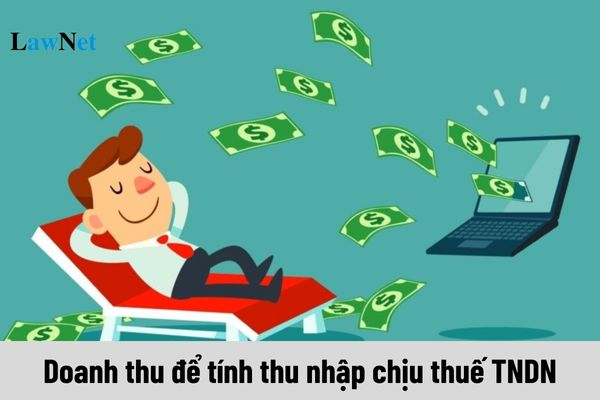How is revenue determined for calculating CIT taxable income for goods and services sold by installment in Vietnam?
How is revenue determined for calculating CIT taxable income for goods and services sold by installment in Vietnam?
Based on the provisions of Point a, Clause 3, Article 5 of Circular 78/2014/TT-BTC as follows:
Revenue
...
3. Revenue for calculating taxable income in certain cases is determined as follows:
a) For goods and services sold by installment or deferred payment, the revenue is the lump-sum sale proceeds of goods and services, excluding installment interest and deferred payment interest.
...
The revenue for calculating CIT taxable income for goods and services sold by installment is determined as the lump-sum sale proceeds of goods and services, excluding installment interest and deferred payment interest.

How is revenue determined for calculating CIT taxable income for goods and services sold by installment in Vietnam? (Image from the Internet)
How is CIT taxable income determined based on revenue in Vietnam?
Based on Clause 1, Article 5 of Circular 78/2014/TT-BTC, guidelines for determining revenue for calculating CIT taxable income are as follows:
Revenue
1. Revenue for calculating taxable income is determined as follows:
Revenue for calculating taxable income is the total sales of goods, processing fees, service provision fees, including subsidies, additional fees, and surcharges that the enterprise enjoys, regardless of whether the money has been collected or not.
a) For enterprises paying value-added tax using the deduction method, the revenue does not include value-added tax.
Example 4: Enterprise A pays value-added tax using the deduction method. The VAT invoice includes the following items:
Sale price: 100,000 VND.
VAT (10%): 10,000 VND.
Payment price: 110,000 VND.
Revenue for calculating taxable income is 100,000 VND.
b) For enterprises paying value-added tax using the direct method on added value, the revenue includes value-added tax.
Example 5: Enterprise B pays value-added tax using the direct method on added value. The sales invoice only lists the sale price as 110,000 VND (price includes VAT).
Revenue for calculating taxable income is 110,000 VND.
c) In the case of enterprises with service business activities where customers pay in advance for multiple years, the revenue for calculating taxable income is allocated according to the number of years the payment is made in advance or determined according to the lump-sum payment revenue. If the enterprise is enjoying tax incentives, the determination of the tax amount entitled to incentives must be based on the total CIT payable for the years in which advance payments are received divided by the number of years of advance payment.
The revenue for calculating CIT taxable income is the total amount from the sale of goods, processing fees, and service provision fees, including subsidies, additional fees, and surcharges that the enterprise enjoys, regardless of whether the amount has been received or not.
For enterprises paying value-added tax using the deduction method, the revenue does not include value-added tax.
For enterprises paying value-added tax using the direct method on added value, the revenue includes value-added tax.
In case enterprises have service business activities where customers pay in advance for multiple years, the revenue for calculating taxable income is allocated to the number of years of advance payment or determined as lump-sum payment revenue.
In case enterprises are enjoying tax incentives, the determination of the tax amount entitled to incentives must be based on the total CIT payable for the years of advance payment divided by the number of years of advance payment.
When is revenue determined for calculating CIT taxable income in Vietnam?
Based on Clause 2, Article 5 of Circular 78/2014/TT-BTC, the time for determining revenue for calculating CIT taxable income is defined as follows:
Revenue
...
2. The time for determining revenue for calculating taxable income is determined as follows:
a) For goods sales activities, it is the time of transfer of ownership and right to use the goods to the buyer.
b) For service provision activities, it is the time of completion of service provision or completion of each part of service provision to the buyer, except for the cases stated in Clause 3, Article 5 of Circular No. 78/2014/TT-BTC, Clause 1, Article 6 of Circular No. 119/2014/TT-BTC.
c) For air transportation activities, it is the time of completion of the transportation service provided to the buyer.
d) Other cases as prescribed by law.
Thus, the time for determining revenue for calculating CIT taxable income is as follows:
- For goods sales activities: It is the time of transfer of ownership and right to use the goods to the buyer.
- For service provision activities: It is the time of completion of service provision or completion of each part of service provision to the buyer.
Except for certain cases of revenue determination under Clause 3, Article 5 of Circular 78/2014/TT-BTC and goods and services used for exchange in Clause 1, Article 6 of Circular 119/2014/TT-BTC.
- For air transportation activities: It is the time of completion of the transportation service provided to the buyer.
- Other cases as prescribed by law.

